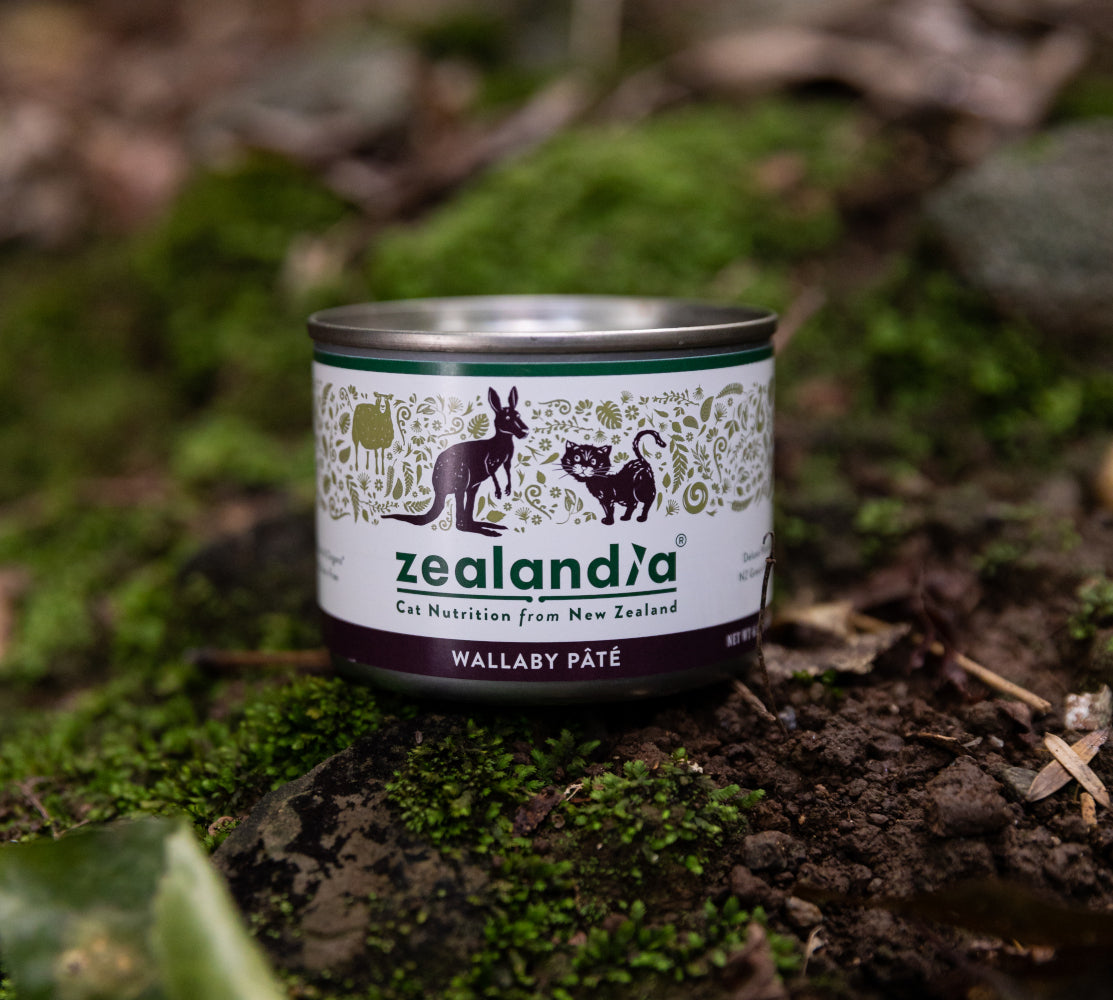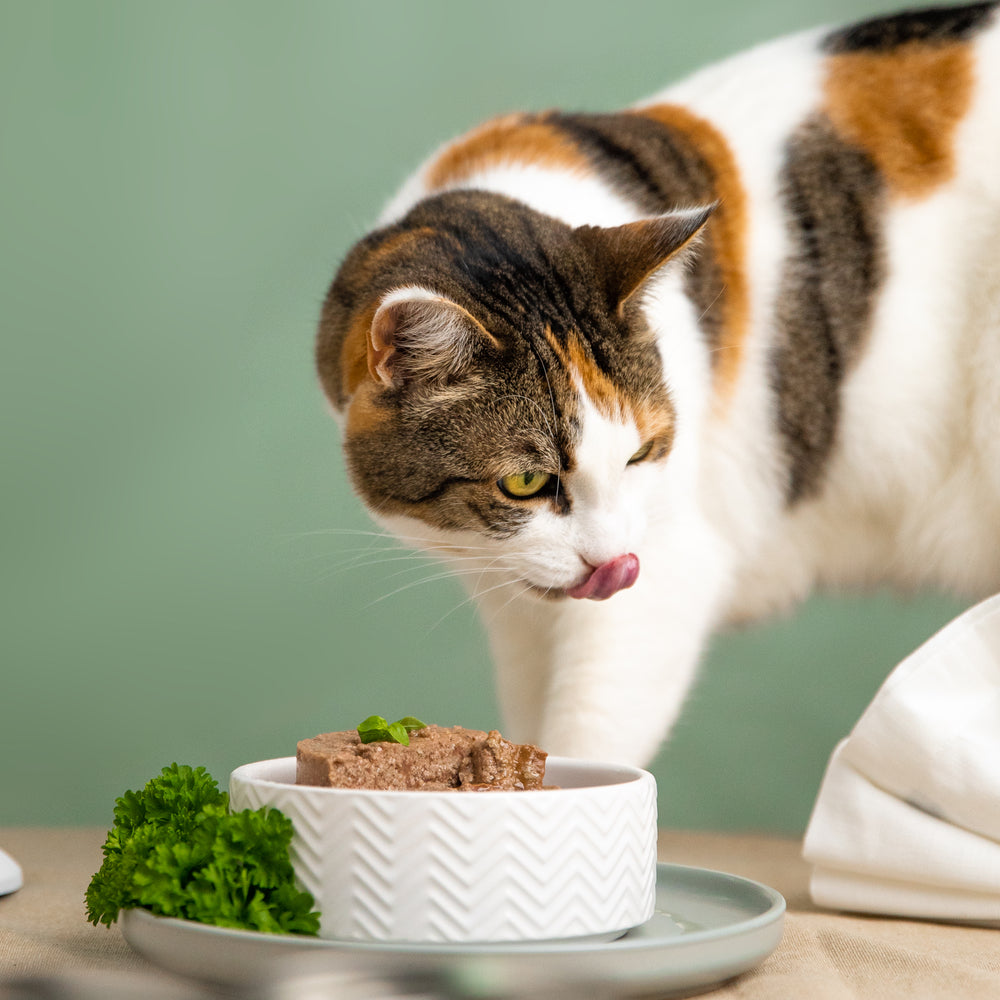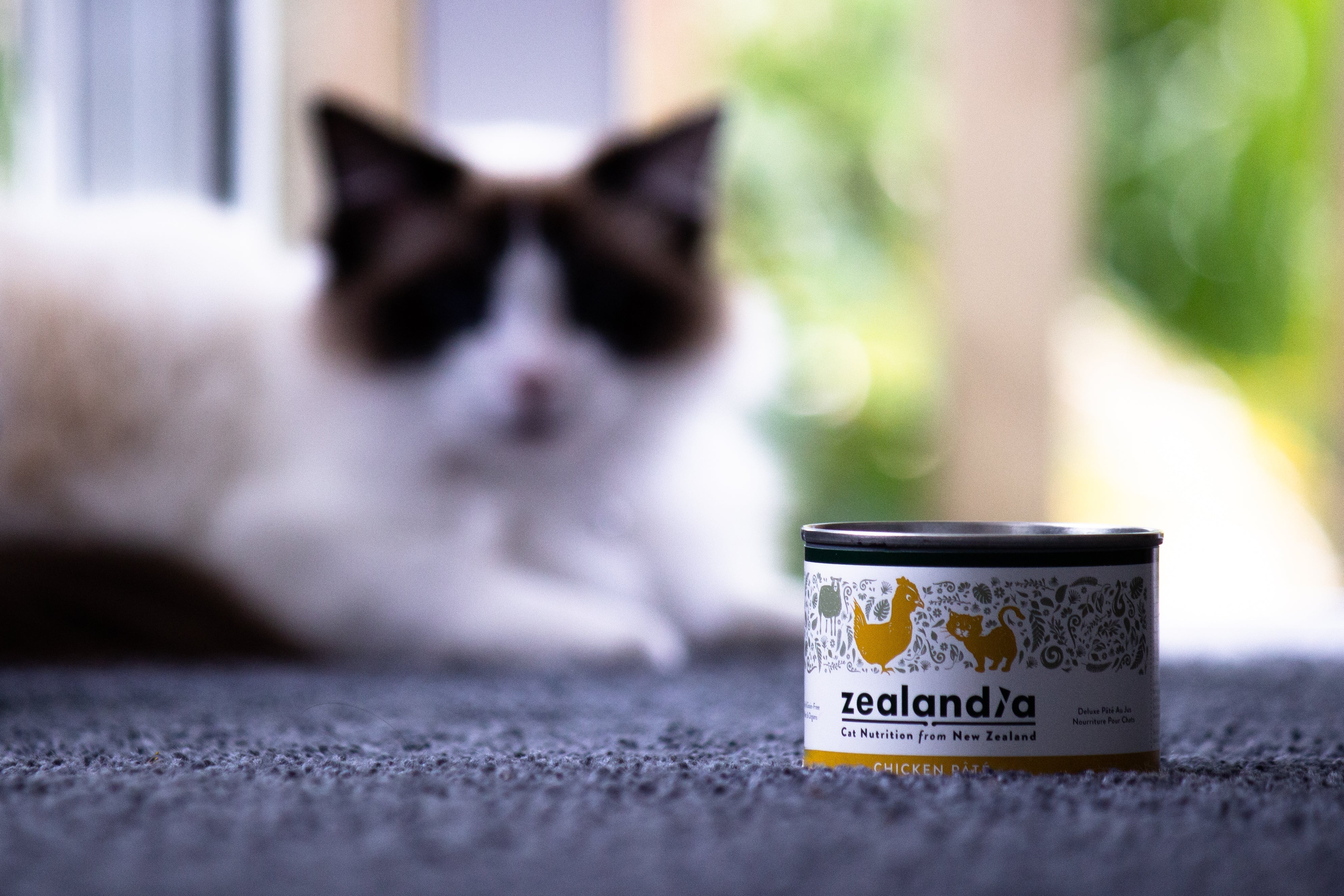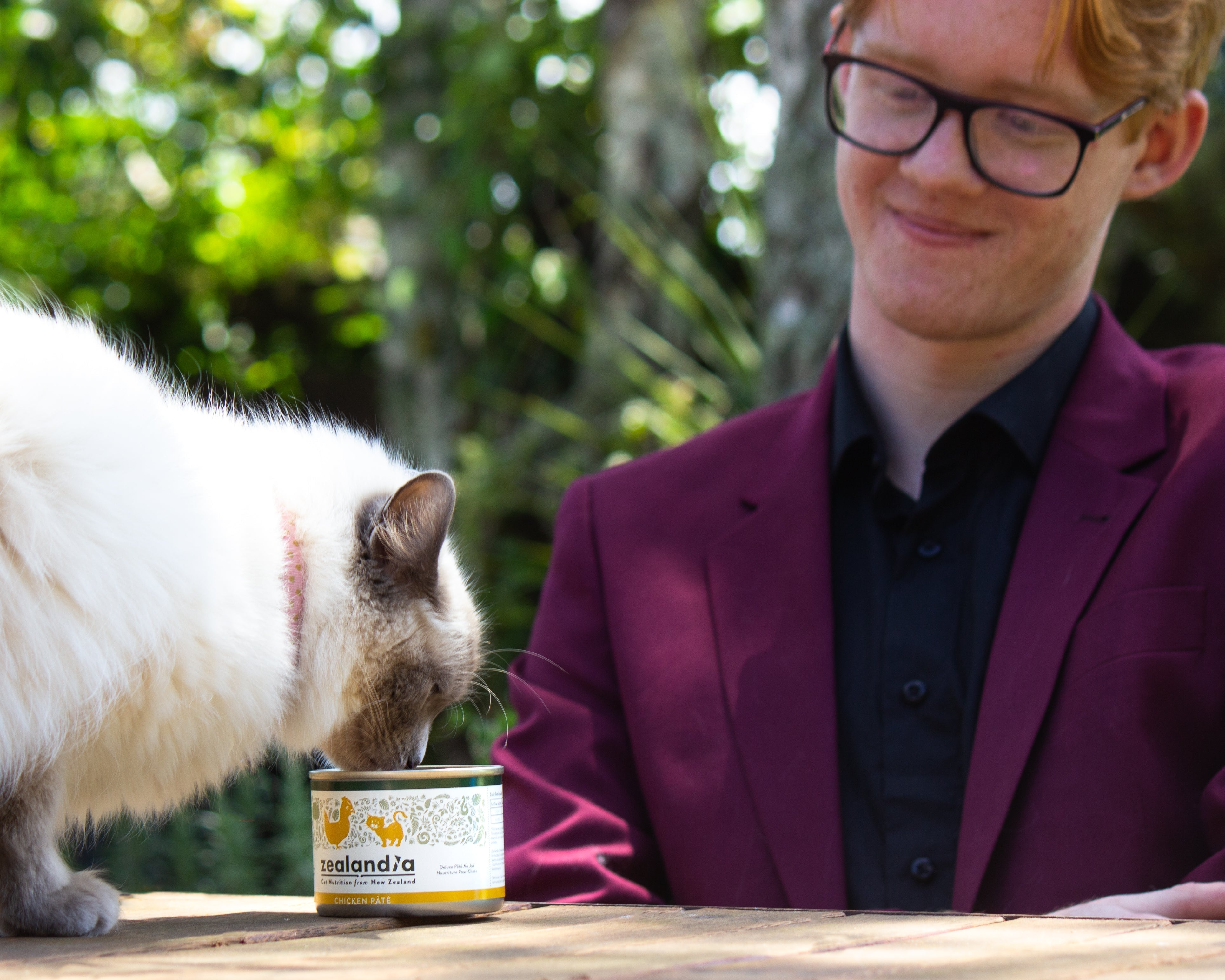Food Allergies - What are the advantages of feeding hypoallergenic meats?

Written by Dr. Sarah-Jane Molier BSc BVM&S MRCVS (United Kingdom)
Dietary allergies or intolerances can cause a wide range of symptoms, and untreated allergies can cause our pets very real suffering. Feeding a special diet can be used to diagnose an underlying allergy, as well as treating it. Feeding the right diet can not only improve their quality of life, but often reduce (or even eliminate) the need for lifelong medication. So, let’s take a look at hypoallergenic meats for dogs and cats with food allergies.
What are the symptoms of food allergies?
It’s hard to estimate how many dogs and cats are affected by food allergies, as there is no one reliable test. Cats and dogs with food allergies often have other allergies too, such as to fleas or pollens, making diagnosis even more challenging. Current studies estimate that anywhere between 8 and 62% of itchy dogs, and between 1 and 11% of cats with skin disease will have food allergies. In total, it is believed to affect around 1-2% of dogs and cats.
There are many tests available online, claiming to be able to diagnose food allergies. These range from testing hair to saliva swabs. Unfortunately, none of these are reliable. The most reliable way of diagnosing food allergies is by exclusively feeding a special diet for 8-12 weeks, and seeing if the symptoms improve or resolve. If they do, your veterinarian will then suggest feeding their original diet again. If the symptom then recurs, this confirms food allergies.
So, how do you know if your pet has a food allergy? Symptoms to watch for include:
- Itchy skin, that is not seasonal (i.e. it is a problem all year round, rather than just in summer)
- Scabby skin
- Excessive grooming
- Fur loss
- Recurring skin problems or infections
- Recurring ear infections
- Flatulence (increased gas)
- Passing stools frequently
- Sickness
- Diarrhoea
- Poor stool quality (for example sloppy, or mucous in the stool)
- Respiratory signs (such as coughing or wheezing)
Naturally, all of these symptoms can have many other causes. If you notice any of these signs in your pet, you should book an appointment with your veterinarian as soon as possible.
Many people wrongly assume that their pet can’t be suffering from food allergies, since they’ve not changed their food recently. In fact, the opposite is true. A pet needs to have been eating a food for some time for an allergy to develop. However, this does not mean that switching foods regularly will prevent food allergies, despite popular myth! It’s the ingredients within a food that can cause allergies, so switching brands won’t make a difference if any of the ingredients are the same.
What is a ‘diet trial’?
If your veterinarian suspects food allergies, they will advise a diet trial. There are a few options for this:
- Hydrolysed diets
These are commercially made ‘prescription’ pet foods. The proteins have been processed and broken down into small fragments, which minimises the risk of an allergic reaction. Some of these diets are tastier than others, so it may be a case of finding one that suits your pet! Gradually introducing the diet over a couple of weeks can help, since it allows your pet time to adjust to the new taste.
- A novel protein diet (containing a new, highly digestible protein)
This means a diet containing only one protein source, that your pet has never eaten before. It takes time for a food allergy to develop, so a dog or cat should not be allergic to a protein that they have never eaten before. Examples of common allergens in dogs and cats include chicken, beef and dairy.
A novel protein diet can be home cooked, or a manufactured pet food. Home cooked diets have the benefit that you know exactly which ingredients go into them, but it’s essential that they are nutritionally complete. For this reason, vets will only usually recommend feeding a home cooked diet under the guidance of a veterinary qualified nutritionist.
Many people find feeding a nutritionally complete pet food simpler, quicker and less expensive than home cooking. The pet food should contain only one protein source, and it should be one that your pet has never eaten before. The disadvantage is that pet store diets can be contaminated with other proteins, whereas ‘prescription’ diets wouldn’t be. For this reason, vets usually recommend a veterinary prescription novel protein diet.
Whether you choose a hydrolysed diet or a novel protein diet, you need to feed only that diet for 8-12 weeks. This means no other treats, table scraps or dietary supplements. While this may sound boring, a treat to your pet is often just the excitement of getting some food outside of their usual meal times! You can always offer some of the test diet as a treat. If your pet’s symptoms improve, at the end of the 12 weeks you would need to feed their original diet again. This is called ‘rechallenging’. If your pet’s symptoms recur, this confirms a food allergy.
Once your pet has been diagnosed with a food allergy, you can then start to identify the offending foods. You can do this by adding a pure protein source to the diet, one at a time. If your pet remains symptom free, then they are not (currently) allergic to that protein. If your pet’s symptoms recur within a couple of weeks of re-introducing the protein, then your pet is allergic to that protein, and it should be excluded from their diet going forward. You will need to go back to the test diet alone until the symptoms resolve, then you can try another protein.
Diet trials and challenges can be complicated! Your vet can advise you and guide you through the process.
What is hypoallergenic meat?
It’s important to understand that technically there is no such thing as a ‘hypoallergenic meat’, or even a ‘hypoallergenic diet’, since every animal is different. One dog may be allergic to a protein that another can eat without issue.
The term ‘hypoallergenic meats’ is used to describe meats that aren’t commonly used in the pet food industry, meaning pets are less likely to have eaten them in the past. This means they are less likely to be allergic to them. However, your dog or cat can still be allergic to a ‘hypoallergenic meat’ if they have previously eaten it in their diet. So, when choosing a hypoallergenic protein diet for your pet, it’s important to choose one that contains a protein your pet has never eaten before. Examples of proteins that animals are unlikely to have encountered before include brushtail, wallaby and goat.
What are the benefits of a hypoallergenic diet?
First things first, it’s important to remember that there is no such thing as a true, completely hypoallergenic diet. The closest thing you can get is the veterinary prescription hydrolysed diets. Just because your friend’s dog or cat has flourished on a particular diet, that doesn’t mean that yours will too. Each dog or cat is unique, and if they have food allergies they will be unique too.
Hypoallergenic diets usually contain proteins (‘hypoallergenic’ meats) that dogs or cats are less likely to be allergic to. Good examples of ‘hypoallergenic’ meats would be brushtail, wallaby or goat. Hypoallergenic diets are also usually free from added artificial colours, flavourings and preservatives. Since hypoallergenic food usually contains meat from a single protein source, rather than a mix of different meats processed together, it can be beneficial for dogs or cats with sensitive stomachs. Many contain easily digestible carbohydrate sources, such as sweet potato. Some have added nutrients to benefit skin or digestion.
Some pets with food intolerances, rather than allergies, will thrive on a ‘hypoallergenic’ diet. While they aren’t recommended for the initial diet trial to diagnose a food allergy, they can be useful after diagnosis. If your pet has been diagnosed with food allergies, you may be able to find a commercial ‘hypoallergenic’ diet which doesn’t contain the ingredients that they are allergic to.
All dogs and cats should be fed a high quality, nutritionally complete diet. Some dogs and cats will benefit from a diet that does not contain the most common food allergens, i.e. a ‘hypoallergenic’ diet. Diets containing ‘hypoallergenic meats’ can be useful for pets with food allergies, after a diagnosis has been made. If you suspect your pet has a food allergy, or they have any of the symptoms listed above, it’s important that you book a consult with your veterinarian. They will rule out other, potentially more serious, causes of their symptoms and will guide you through a diet trial if necessary.
----------------------------------------------------------------------------------------------------------------------------
Notes from the team at Zealandia:
Our canned food products contain 95% meat & organs (excluding water sufficient for processing). This is a typical summary of ingredients:
Deboned Meat: ~61.5%
Lamb Organs: ~30% (Liver, Lung, Green Tripe, Heart, Kidney, Plasma)
NZ Green Mussels: ~3%
Dried Yeast: ~3%
Vegetable Gums: ~1% (Guar Gum, Agar Agar)
Salmon Oil: ~0.5%
Vitamins & Minerals: ~1% (Calcium Carbonate, Potassium Chloride, Taurine, Choline Chloride, Iron Proteinate, Zinc Glycine Complex, Niacin Supplement, Alpha-Tocopherol Acetate, Sodium Selenite, Manganese Proteinate, Copper Glycine Complex, Thiamine Mononitrate, Calcium Pantothenate, Riboflavin, Pyridoxine Hydrochloride, Vitamin A Acetate, Biotin, Vitamin B12 Supplement, Calcium Iodate, Folic Acid, Cholecalciferol)
----------------------------------------------------------------------------------------------------------------------------
The Zealandia variants most suitable for dogs and cats with a history of food allergies are: Brushtail, Goat, Venison, Wallaby
- Novel/exotic proteins
- Single-source animal protein (excl. Lamb Organs)
- No chicken/beef/fish (common allergens)



